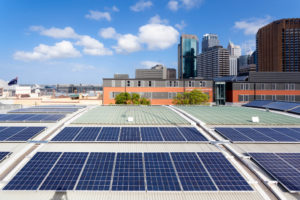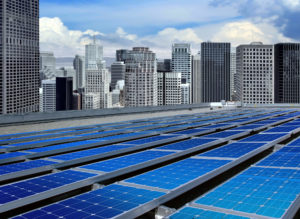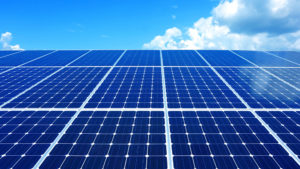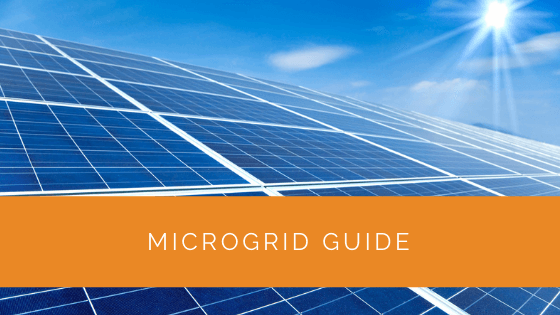Have you ever wondered how a hospital complex, business center, or college campus is powered? If the answer was a resounding yes, this article is for you. With the help of a microgrid, a self-sufficient energy system is created.
This system gives power to the areas like those mentioned above. For a microgrid to work, different kinds of energies come from generators, solar panels, wind turbines, etc. Additionally, the newer microgrids come with energy storage in the form of batteries.
So, if you’re willing to dig deeper to learn about microgrids, read on as we tell you what microgrids are and how they function.
Contents
- 1 Key Takeaways
- 2 What Are Microgrids?
- 3 Where Do We Need Microgrids?
- 4 Where Are Microgrids Used?
- 5 What Are The Different Types Of Microgrids?
- 6 What Are The Benefits Of Microgrids?
- 7 How Do Microgrids Work?
- 8 What Are The Advantages Of Microgrids?
- 9 What Are The Disadvantages Of Microgrids?
- 10 What Are The Challenges To Microgrids?
- 11 Case Study: Implementing a Microgrid for a University Campus
- 12 Expert Insights From Our Solar Panel Installers About Microgrids
- 13 Experience Solar Excellence with Us!
- 14 Conclusion
Key Takeaways
- Microgrids are self-sufficient energy systems that power small-scale communities using various energy sources like generators, solar panels, and wind turbines, along with energy storage in batteries.
- Microgrids are needed to transition away from fossil fuels, reduce electricity costs, and promote sustainability, making them a crucial solution for the environment and economic growth.
- Microgrids have diverse applications, including villages, campuses, military bases, and remote areas, and they come in various types like campus, island, military, community, and remote microgrids, each serving specific needs.
What Are Microgrids?
Before we dive into the technicality of microgrids, let’s take a look at what microgrids are and why they are on the rise.
The microgrid is a relatively new concept and is becoming popular because renewable energy prices are decreasing. Moreover, renewable energy is good for the environment. Now to answer the question – what is a microgrid?
A microgrid is the electrical grid network used to power a small-scale community such as a village, a college campus, or a set of apartments.
In technical terms, a microgrid is a small network responsible for powering the electrical loads of a particular community with the help of local electricity sources.
Microgrids are connected to macro grids but can also operate independently if they are in disconnected or island mode.
Where Do We Need Microgrids?
After reading the information above, the most obvious question must come to mind: why do we need microgrids? Well, we are here to explain the same to you.
Currently, we use fossil fuels as a source of energy. It is no secret that we need to stop doing that because sooner (or later), we will run out of those resources. Microgrids are a solution to this problem. With the help of microgrids, we can use solar energy for our day-to-day activities.
This will certainly help us in making the environment reach the point of sustainability. Furthermore, microgrids help us reduce the cost of electricity that we currently use. The cost of energy and electricity reduces substantially if we use the energy from the sun.
Additionally, we can even store this energy from the sun in storage banks such as batteries. Microgrids can operate on batteries when the central grid is out of power. Many business owners are opting for microgrids because they reduce the overhead costs entirely.
Microgrids undoubtedly contribute to the economic growth of any area where they are utilized while reducing the carbon footprint and lowering CO2 emissions. It is safe to say that microgrids are the best option to move towards sustainability.

Where Are Microgrids Used?
Microgrids have several applications due to the advantages they offer. Now, you must be curious about where we can use microgrids. Below we have collated a list of applications of microgrids.
- Villages
- Schools
- Campuses
- Military bases
- Cities
- Communities
- Emergency response buildings
What Are The Different Types Of Microgrids?
As you saw previously, microgrids have a variety of applications. As patterns in the market and technology continue to change, types of microgrids continue to evolve. Take a look at the types of microgrids that are currently available and being used:
Campus microgrids
These microgrids are typically used in corporate campuses, military campuses, or university campuses. They generally offer combined heat and power (CHP). Their main purpose is to accumulate existing renewable energy and allow easy management.
Island microgrids
As the name suggests, island microgrids are being used in islands to incorporate renewable energy as power systems. Additionally, islands worldwide are trying to inculcate the practice of energy storage into their respective energy systems.
Military microgrids
One of the most critical objectives for any defense system is to ensure that they can rely on energy and have energy storage for a crisis. So, reliance on diesel fuel is not the best way to go in today’s world. The costs are high, and transportation is challenging. To combat this, more and more military bases are using microgrids to increase stability, efficiency, and reliability.
Community microgrids
In some parts of the world, microgrids are helping achieve electrification for the first time in different communities. Microgrids have helped reach renewable energy targets and sustainability goals in other parts of the world. Therefore, the number of communities relying on microgrids has increased as microgrids result in fewer power outages due to the stored energy systems.
Remote microgrids
Remote microgrids are responsible for providing access to energy in areas that are beyond the grid. Earlier, diesel was used to fuel such areas. However, with the popularity and affordability of renewable energy, microgrids have come into the picture.
What Are The Benefits Of Microgrids?
As you can see, microgrids have a wide range of applications. Microgrids offer features that you can’t miss – which is why they are on the rise. Here are the five impressive benefits of microgrids that we have put together for you!
Reduction of fuel usage
Although microgrids offer highly efficient power, they still reduce fuel use and substantially cut down the carbon footprint. Additionally, they also lead to lowering line losses.
High energy reliability
As we mentioned above, microgrids come with different forms of distributed energy. They do not require any above-ground wires. This results in enhanced energy reliability. So, whenever there is a power outage, you can rely on the microgrid for power.
Renewable energy
Microgrids come with energy storage systems that make it easier for you to utilize and manage renewable energy before you get more of it. They are a perfect and the most suitable support for renewable energy generation.
Pocket-friendly
As renewable energy prices are on the decrease, microgrids come at a surprisingly low price. Furthermore, as these systems come with stored energy, you will cut down on the cost of extra power that you need during power outages.
Great energy delivery
Microgrids are known to offer you fewer interruptions, lower-cost, efficient and clean energy. This is also followed by less variability.

How Do Microgrids Work?
To understand the functioning of a microgrid, you will have to know how the grid works in totality. The grid is responsible for connecting buildings, homes, and businesses to the central power sources.
This connection enables us to use the appliances, electronics, and cooling or heating systems at our respective locations. However, being connected to a single grid also means that all connected users are affected whenever one part of the grid needs maintenance.
This is where a microgrid comes into the picture. A microgrid is also connected to the central power grid. However, a microgrid can break away from this central grid and operate single-handedly with the help of a stored energy system.
This feature is beneficial in times of power outages, storms, or situations where the central grid needs to be repaired. As discussed earlier, a microgrid comes with distributed forms of energy through batteries, generators, solar panels, and wind turbines.
So, yes! A microgrid can run indefinitely if it is powered from a source that relies solely on renewable energy.
What Are The Advantages Of Microgrids?
Microgrids are truly a godsend that is helping us save the environment. Apart from the amazing features of microgrids that you have already learned about, take a look at these advantages that will make you switch from your current powering system to microgrids:
- Microgrids have made RTO markets more competitive.
- They reduce load and congestion on the grid.
- They use local energy and resources to supply power.
- Microgrids improve the stability and operation of the regional or central electric grid.
- They offer clean, efficient, and low-cost energy.
- They lead to an increase in energy reliability.
- Microgrids provide thermal storage capabilities, which enable simple local management of renewable energy regeneration.
- They are perfect for supporting regions facing a crisis, especially during bad weather conditions or natural disasters.
- They offer highly efficient CHP.
- Microgrids reduce fuel usage and carbon footprint.
What Are The Disadvantages Of Microgrids?
 Although the entire concept of microgrids seems appealing, there remains room for improvement. Below, we have carefully curated a list of disadvantages of microgrids that will surely interest you.
Although the entire concept of microgrids seems appealing, there remains room for improvement. Below, we have carefully curated a list of disadvantages of microgrids that will surely interest you.
- A microgrid, especially solar microgrids, requires frequent maintenance of battery systems and inverters. It is also not space-efficient.
- You will also have to monitor the voltage levels and frequency of the entire microgrid system to ensure that it functions properly.
- Microgrids offer a stored energy system. However, this battery system comes at an extremely high cost.
- If you add a new energy source or increase the load, the entire microgrid system faces an enhanced complexity.
- If you want to resynchronize the utility grid, you are likely to face a lot of difficulty.
- Protecting the entire microgrid system can be highly challenging.
What Are The Challenges To Microgrids?
After intensive research on microgrids, these are the most common challenges that are posed to the same. Check them out!
State-level planning
The most important part of executing microgrids’ ideas is adopting them at a state level. Thus, the state will also have to hinge on its relationship with the utility provider.
This is where the challenge arises. To ensure a smooth implementation of the microgrid program, planners need to strategize regarding the distribution, storage, and maintenance of energy systems. This requires unity in state-by-state regulations.
Interconnection
Many utilities present in connected areas deny the use of microgrids because microgrids might pose a problem to the main central grid. Microgrids are likely to reduce the business of these utilities and can also contribute to instability in aging grids.
Financing
Cost and financing have always been among the biggest challenges to the transmission and storage of renewable energy. This is one of the major reasons microgrids have not caught on entirely in all parts of the world. Nevertheless, regulations are now observing an improvement in developing microgrids and how we can finance them.
Case Study: Implementing a Microgrid for a University Campus
Background
Solar Panels Network USA was approached by a prestigious university seeking to enhance its energy resilience and sustainability. The university’s primary goals were to reduce its reliance on the main power grid, lower energy costs, and ensure an uninterrupted power supply for critical research facilities.
Project Overview
We proposed a comprehensive microgrid solution tailored to the university’s needs. The project involved integrating multiple renewable energy sources, including solar panels and wind turbines, complemented by advanced battery storage systems. The microgrid was designed to operate both in conjunction with the main power grid and independently during outages.
Implementation
Assessment and Design: Our team conducted a thorough site assessment to determine the optimal placement of solar panels and wind turbines. We also analyzed the university’s energy consumption patterns to size the battery storage system appropriately.
Installation: We installed high-efficiency solar panels on several rooftops across the campus, along with wind turbines at strategic locations. The installation process was coordinated to minimize disruption to campus activities. Advanced lithium-ion battery storage units were installed to store excess energy generated during peak production times.
Integration and Testing: The microgrid was integrated with the university’s existing power infrastructure. Our engineers conducted rigorous testing to ensure seamless operation between the microgrid and the main power grid. We also set up a monitoring system to provide real-time data on energy production and consumption.
Training and Handover: We provided comprehensive training to the university’s facilities management team on operating and maintaining the microgrid. Detailed documentation and a maintenance schedule were also handed over to ensure the longevity and efficiency of the system.
Results
Increased Energy Independence: The university now benefits from a reliable and sustainable energy supply. The microgrid can independently power essential facilities during grid outages, ensuring uninterrupted research activities and campus operations.
Cost Savings: By generating its own electricity from renewable sources, the university has significantly reduced its energy bills. The savings are being redirected towards further sustainability initiatives and educational programs.
Environmental Impact: The microgrid has substantially decreased the university’s carbon footprint by reducing reliance on fossil fuels. This aligns with the university’s commitment to sustainability and environmental stewardship.
Enhanced Resilience: The microgrid’s ability to operate independently during grid failures has enhanced the campus’s resilience. Critical facilities, such as laboratories and data centers, remain operational even during prolonged outages.
Summary
Implementing a microgrid has transformed the university’s energy landscape. The project demonstrates how integrating renewable energy sources with advanced storage solutions can achieve energy resilience, cost savings, and environmental benefits. Solar Panels Network USA continues to support the university with ongoing maintenance and optimization services, ensuring the microgrid operates at peak efficiency. This case study highlights our expertise in delivering tailored microgrid solutions that meet specific client needs and contribute to a sustainable future.
Expert Insights From Our Solar Panel Installers About Microgrids
Microgrids are revolutionizing how we think about energy independence and reliability. By incorporating multiple renewable energy sources, such as solar and wind, they provide a resilient power supply for critical infrastructure like hospitals and military bases.
Chief Microgrid Engineer
The beauty of microgrids lies in their versatility. They can seamlessly switch between being grid-connected and operating independently, ensuring that communities and facilities have a reliable power source even during grid outages.
Senior Solar Project Manager
Maintaining a microgrid involves regular monitoring and maintenance of the battery systems and inverters. This ensures that the system runs efficiently and maximizes the benefits of renewable energy sources.
Solar Maintenance Specialist
Experience Solar Excellence with Us!
Trust in Solar Panels Network USA, where our seasoned experts deliver top-quality solar solutions for homes and businesses nationwide. With a legacy of countless successful installations and a commitment to sustainable energy, we’re your reliable partner in the solar journey. Ready for a brighter, eco-friendly future? Call us now at (855) 427-0058 and harness the power of the sun!
Conclusion
Microgrids are certainly cost-effective and offer lower electricity costs owing to the self-generating process. Moreover, microgrids now come with batteries which are energy storage systems. This feature of microgrids makes them cost-competitive and a better choice.
Apart from safeguarding the environment through the use of renewable energy, microgrids are financially convenient and are being used on most campuses today. Microgrids are a great way to reduce the carbon print and to turn towards clean energy.
So, what are you waiting for? Try out the microgrid system for your campus or community to access a secure and efficient energy source.
About the Author
Solar Panels Network USA stands at the forefront of solar energy solutions, driven by a team of seasoned solar engineers and energy consultants. With over decades of experience in delivering high-quality solar installations and maintenance, we are committed to promoting sustainable energy through customer-centric, tailored solutions. Our articles reflect this commitment, crafted collaboratively by experts to provide accurate, up-to-date insights into solar technology, ensuring our readers are well-informed and empowered in their solar energy decisions.

